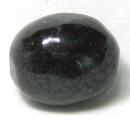|
|
||||||||||||||||
|
||||||||||||||||
|
||||||
|
|
|
|
Arfvedsonite
|
|
| | |
| Discovered in 1823; IMA status: Valid (pre-IMA; Grandfathered) | ||
|
| ||
|
Chemistry |
|
|
| |
|
NaNa2[(Fe2+,Mg)4Fe3+]Si8O22(OH)2 | |
|
|
Sodium Iron Magnesium Silicate Hydroxide |
|
Molecular Weight: |
958.89 gm |
|
Composition: |
Sodium |
7.19 % |
Na |
9.70 % |
Na2O |
|
|
Iron |
29.12 % |
Fe |
29.97 % |
FeO / 8.33 % Fe2O3 |
|
|
Silicon |
23.43 % |
Si |
50.13 % |
SiO2 |
|
|
Hydrogen |
0.21 % |
H |
1.88 % |
H2O |
|
|
Oxygen |
40.04 % |
O |
|
|
|
|
|
100.00 % |
|
100.00 % |
= TOTAL OXIDE |
|
|
|
||||
|
Classification |
|
|
| |
|
Silicates (Germanates) | |
|
8/F.08-100 | |
|
|
9 : SILICATES (Germanates)
|
|
Related to: |
Amphibole Group, Sodic Clino-Amphibole Subgroup. Arfvedsonite-Magnesio-Arfvedsonite Series. |
|
Members of Group: |
Amphibole Group: Mg-Mn-Fe-Li Clino-Amphibole Subgroup, Calcic Clino-Amphibole Subgroup, Sodic Clino-Amphibole Subgroup, Mg-Fe-Mn-Li Ortho-Amphibole Subgroup |
|
Varieties: |
Anophorite, Juddite |
|
Synonyms: |
Arfvedsonite (of Brooke), Arfwedsonite, Soda-Hornblende |
|
|
|
|
Crystal Data |
|
|
|
|
|
Commonly as elongated prisms, striated and unterminated, to 0.60 m; may be tabular. As prismatic aggregates and radiating fibrous clusters. |
|
|
Simple or lamellar twinning |
|
|
|
|
|
Physical Properties |
|
|
|
|
|
Perfect on {110} |
|
|
Irregular/Uneven |
|
|
Brittle |
|
|
5.5 - 6.0 |
|
|
3.44 - 3.45 (g/cm3) |
|
|
None |
|
|
Not Radioactive |
|
|
|
|
|
Optical Properties |
|
|
|
|
|
Black, Bluish Gray, deep Green on thin edges |
|
|
Transparent to Opaque |
|
|
Vitreous (glassy); Silky when fibrous |
|
|
1.652 - 1.708 Biaxial ( - ) |
|
|
0.009 - 0.014 |
|
|
Strong; r > v |
|
|
Strong, in blue-greens, yellow-browns, or gray-violets. |
|
|
|
|
|
Occurances |
|
|
|
|
|
Geological Setting: |
Common in alkalic granites and other alkalic plutonic rocks and pegmatites. |
|
Common Associations: |
Nepheline, Albite, Aegirine, Riebeckite, Katophorite, Magnesio-katophorite, Quartz. |
|
Common Impurities: |
Ti, Mn, Ca, Al, K, F |
|
Type Locality: |
Kangerdluarssuq (Kangerdluarsuk) Firth, Ilimaussaq complex, Narsaq, Kitaa (West Greenland) Province, Greenland |
|
Year Discovered: |
1823 |
|
View mineral photos: | |
|
|
|
|
More Information |
|
|
|
|
|
| |
|
|
|
|
The best localities for finding
Arfvedsonite include Mont Saint-Hilaire, Quebec,
Canada; the Ilimaussaq
Intrusion, in Southern Greenland; the agpaitic pegmatites of the Kola Peninsula, Russia and Langesundfjord, Norway.
|
|
|
We
have not photographed our Arfvedsonite gems yet. Please
check back soon! |
